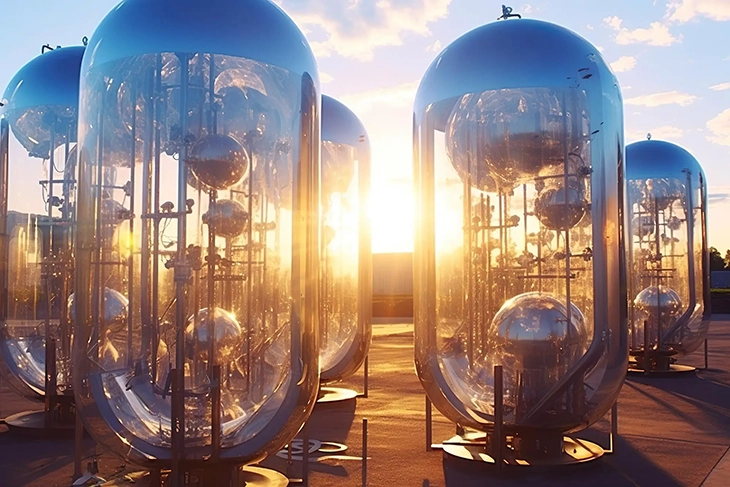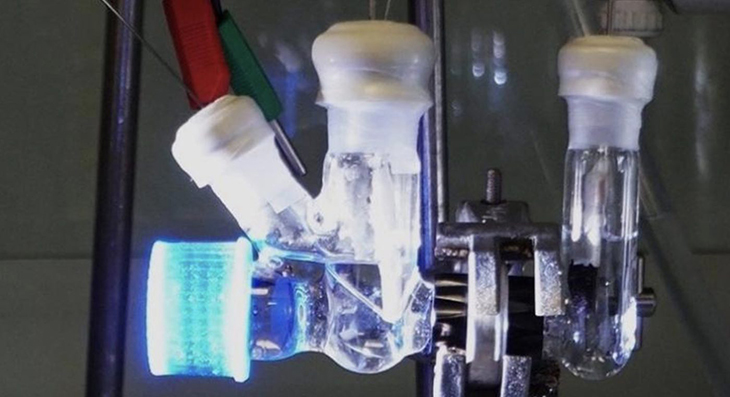
Researchers at Cambridge University have achieved a remarkable breakthrough by demonstrating the conversion of carbon dioxide (CO2) from industrial processes or directly from the atmosphere into clean and sustainable fuels, all powered by solar energy.
Their innovative approach involves a solar-powered reactor that utilizes captured CO2 and plastic waste as a catalyst, transforming them into valuable sustainable fuels and chemicals. During extensive testing, they successfully converted CO2 into syngas, a crucial component for sustainable liquid fuels, and plastic bottles were transformed into glycolic acid, commonly used in the cosmetics industry.
Unlike previous tests, the team sourced CO2 from real-world origins, such as industrial emissions and ambient air. Through their process, they effectively captured and concentrated CO2, converting it into sustainable fuel.
While acknowledging the advances in carbon capture and storage, where CO2 is buried underground after capture, the researchers believe that “carbon capture and utilization” is a more intelligent approach, as it transforms CO2 into useful products.
Inspired by photosynthesis, the work conducted by Professor Erwin Reisner and his team at the Department of Chemistry and the Cambridge Circular Plastics Centre focuses on developing net-zero carbon fuels.
Up until now, the experiments were conducted with pure, concentrated CO2 in cylinders. However, for practical applications, the technology needs to actively capture CO2 from the air, which is a complex task due to the presence of various molecules besides CO2. The inclusion of plastic in their process proves to be helpful.
To selectively capture CO2 from the air, the researchers bubble air through an alkaline solution. This process traps CO2 while allowing other gases, like nitrogen and oxygen, to harmlessly escape. Consequently, the researchers can concentrate the CO2 from the air in a solution, making it easier to work with. This represents a significant step forward in the utilization of CO2 for sustainable fuel production.
“The plastic component is an important trick to this system,” explained Dr. Motiar Rahaman, the co-first author of the study. “Capturing and using CO2 from the air makes the chemistry more difficult. But, if we add plastic waste to the system, the plastic donates electrons to the CO2. The plastic breaks down to glycolic acid, which is widely used in the cosmetics industry, and the CO2 is converted into syngas, which is a simple fuel.”
The integrated system comprises a photocathode and an anode, divided into two compartments. One side of the system captures CO2 solution, which undergoes conversion into syngas. On the opposite side, plastics are transformed into valuable chemicals solely utilizing sunlight.
“This solar-powered system takes two harmful waste products—plastic and carbon emissions—and converts them into something truly useful,” also said co-first author Dr. Sayan Kar.
“Instead of storing CO2 underground, we can capture it from the air and make clean fuel from it,” Rahaman stated. “This way, we can cut out the fossil fuel industry from the process of fuel production, which can hopefully help us avoid climate destruction.”
“The fact that we can effectively take CO2 from air and make something useful from it is special,” Kar said. “It’s satisfying to see that we can actually do it using only sunlight.”
Reisner and his team have devoted years to crafting net-zero carbon fuels, drawing inspiration from photosynthesis, the natural process through which plants convert sunlight into sustenance. Their groundbreaking approach involves the utilization of artificial leaves, which efficiently transform CO2 and water into fuels solely harnessing the power of the sun.

Currently, scientists are actively focused on enhancing the efficiency of their bench-top demonstrator device. While further improvements are necessary before this technology becomes viable for industrial applications, the findings, published in the journal Joule, signify another significant stride towards generating clean fuels to drive the economy. This progress offers a promising alternative to environmentally harmful practices such as oil and gas extraction.

What are your thoughts? Please comment below and share this news!
True Activist / Report a typo


